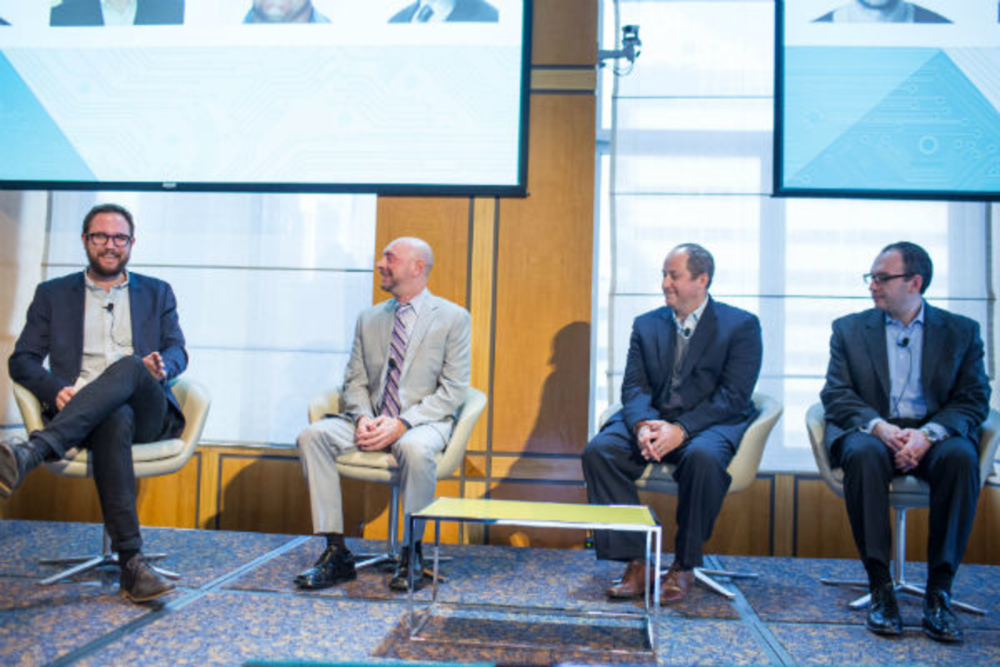To be at the top of the inbox, email marketers have to be at the top of their game. And the three finalists of the Direct Marketing News 2015 Marketing&Tech Innovation Awards, Email Marketing Innovation category, are there.
Jeremy Wilson, director of creative strategy for customer engagement agency OgilvyOne Worldwide, interviewed the contenders during a panel discussion at DMN’s Marketing&Tech Innovation Summit in New York and asked them for their email expertise. Here are seven messaging musts they shared.
1. Cater to customers’ aspirations: Many people daydream of going on vacation, but Best Western International aims to give customers that push to make those dreams a reality with what Marketing Manager Ryun Lambson calls its “aspirational emails.” Using Movable Ink’s technology, the hotel chain dynamically changes the images within its emails based on the recipient’s time-of-open location and the weather there, Lambson explains. If a customer opens the email in New York when it’s snowing, for instance, then Best Western may show him a picture of a beach. Or, if a recipient opens the email in Florida on a sunny day, he says, then the hotel chain may show her an image of someone skiing.
2. Reevaluate where email sits within the company: Instead of sitting within the digital marketing team, InterContinental Hotel Group’s (IHG) email marketers reside within the loyalty group. Kevin Hickey, director of global direct marketing for IHG, says that this allows the hotel company to ensure that the emails are relevant to its loyalty members and that the messaging aligns with what the program promised upon enrollment.
“It really is about the relationship with us and a means to foster the relationship with the consumer,” Hickey said.
3. Don’t underestimate the power of emotion: Credit card offers aren’t always the most riveting conversation starters. So Citi wanted to see if it could make the “dry language” featured in its subject lines and body content more engaging to encourage existing customers to open additional credit card accounts, explains Geoffrey Sanders, SVP of digital marketing for Citi’s U.S. credit card division.
So, the financial services company started using Persado’s Persuasion Automation platform, which leverages semantic algorithms and natural language processing, to generate multiple message variants, analyze them, and test which messages resonated with customers the most. Citi chose to test 16 unique subject lines.
When testing the 16 variants, Persado-generated subject lines against controls, the Persado subject lines experienced a 65% lift. As a result, Citi’s email marketers began writing subject lines that evoked different emotions—like a sense of urgency with “Don’t miss out” or appreciation with “Thanks for being a customer, here’s a reward”—rather than financial mumbo-jumbo, Sanders said.
“We learned that it was much more effective to have an emotional hook,” he added.
4. Take subjectivity out of subject lines: Everyone has their own approach to writing subject lines; however, IHG’s Hickey says that marketers there rely more on analytics than on intuition.
“There’s no shortage of statistical information [showing reasons to] to eliminate some of the subjectivity that ends up in email,” he says.
Indeed, some of the subject lines among Citi’s 16 variants seemed a bit counterintuitive to executives, Sanders says. But instead of simply assuming that the subject lines wouldn’t work, Citi tested them against sample audiences. “The results speak for themselves,” he said.
5. Make email personalization part of the connected consumer experience: Personalization extends far beyond email, according to Best Western’s Lambson. Actually, it’s part of the conversation that customers are having within other channels, he said.
For instance, to promote its app, Best Western dynamically changed the image of the app featured in its emails based on the device on which customers opened the email. The hotel chain has experienced a 143% lift in the number of app downloads since first implementing this technique, according to Lambson.
Similarly, Hickey noted that IHG uses email to cross-promote channels that consumers have indicated a preference for, either explicitly or implicitly, such as social or search.
6. Determine whether email program adjustments actually matter: When it comes to growing their email programs, the possibilities are endless for today’s marketers. But just because marketers can do something doesn’t mean that they should. For instance, although knowing the weather conditions where a customer opens an email drives Best Western’s aspirational emails, this data offers little insight to Citi. “Weather is a little less relevant to credit cards,” Sanders said.
7. Know which metrics are important to your business: Not every company has the same business objectives; therefore, not every company will track the same metrics. Best Western, for example, aims to drive revenue from incremental stays, while Citi strives to generate new account opens. And not every brand can make sense of its metrics right away. Best Western analyzes whether it hit its business objectives on a quarterly basis, Lambson said, because travel is generally a planned experience, not an impulse buy.








